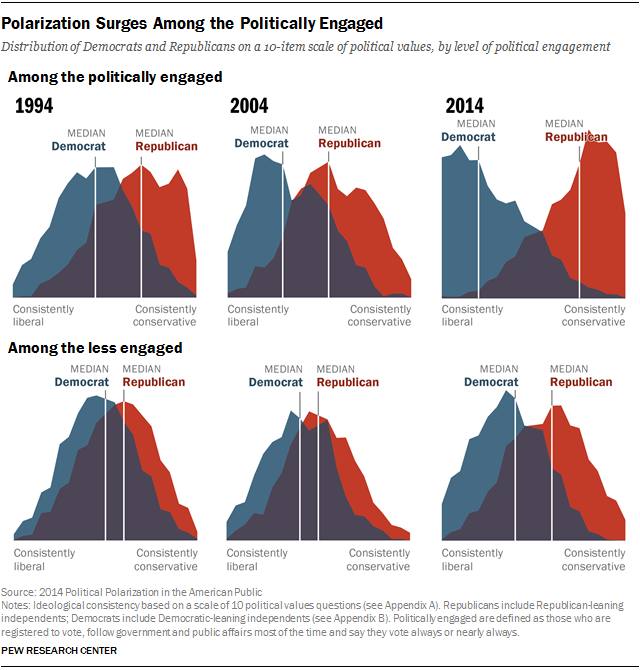It used to be said that politics is the art of addition: how to bring together a large enough coalition of voters to win.
But increasingly politicians have been practicing subtraction, clearly defining themselves and aiming to attract the most highly partisan members of their parties. Very little effort is put into changing minds; it’s all about getting your voters to the polls.
A major reason for this is the increasingly polarized nature of the electorate. As you can see from these charts, 24 years ago the electorate was bunched towards the middle with something like a classic bell curve. Now we have a double-hump electorate and that polarization is especially prominent among the most engaged voters.

When your market is focused around the middle, imitation is encouraged. Competitors tend to offer similar features. For politicians, compromise is possible.
When your market has two – or more – centers, then you need to differentiate. For politicians that means that more extreme positions are encouraged and compromise is undesirable.
An industry like food has many micro-markets which are the result of the personal preferences of hundreds of millions of consumers. Organic food is the fastest growing food category, but others include “health” foods (organic doesn’t have to be healthy), lower-cost processed food from large companies like General Mills, ethnic foods, and – in restaurants – distinctions as subtle as fast food versus fast casual. Differentiation is not only encouraged but required.
Will U.S. politics ever return to a more centered model? Maybe if people get tired of all the yelling. But this 1894 quote from Tolstoy is not encouraging:

